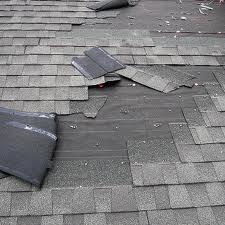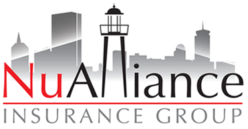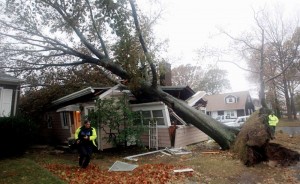How homeowners insurance policies make you pay more upfront before they ever pay a claim.
Have you noticed lately that cartons of ice cream or frozen yogurt have gotten a little smaller? This is a marketing trick that many manufacturers are using to help keep the retail prices down. Give them less for the same price, who’s the wiser? You may be interested to know that many insurance companies are using the same method to keep their rates competitive and affordable. This little known stunt is becoming especially popular in coastal states because of the exposure to windstorms. You will also find it getting popular in areas that suffer severe hailstorms. The insurance companies are actually using two different (and sometimes combined) methods for reducing their risk.
 Wind & Hail Deductibles – In areas where windstorm and hail is the norm, you will most likely be presented with a higher deductible for these perils. This is usually listed on your policy as a percentage of the dwelling coverage. For example, having a 1% deductible seems negligent at first, but if the dwelling amount is $350,000, that will translate to a $3,500 deductible on your wind or hail claim. That is a substantial out of pocket burden to carry. I find it interesting that this is not very conspicuous on your quote or declarations page. Protect yourself by asking about the deductibles before committing to a purchase.
Wind & Hail Deductibles – In areas where windstorm and hail is the norm, you will most likely be presented with a higher deductible for these perils. This is usually listed on your policy as a percentage of the dwelling coverage. For example, having a 1% deductible seems negligent at first, but if the dwelling amount is $350,000, that will translate to a $3,500 deductible on your wind or hail claim. That is a substantial out of pocket burden to carry. I find it interesting that this is not very conspicuous on your quote or declarations page. Protect yourself by asking about the deductibles before committing to a purchase.
Roof Surface Endorsement – this is something that raised its ugly head in 2012. A few of the major insurance companies are placing an endorsement (coverage change) on their policies that reduce the valuation of a wind or hail claim on the roof surface by using a depreciation scale. If, for example, your 10 year old roof needs replacing after a wind or hail storm, the insurance company is going to pay the value of a 10 year old roof, not a new roof. This is referred to as “actual cash value” and could leave you paying thousands of dollars to have your roof replaced. And remember, that 1 or 2% deductible comes right off the top before they depreciate the value of your roof.
It is very interesting that lenders are not screaming about this issue. They are lending money on a very expensive asset that is not being insured to value. It surprises me that they are not demanding a 100% replacement cost policy.
Have these been sneaked into your policy? Have you had the coverage for years? I HIGHLY recommend you look at your most recent policy that was mailed to you and see what riders and exemptions exist. If you need help with that, contact us. We will be glad to let you know what homeowners insurance coverage you actually have.

